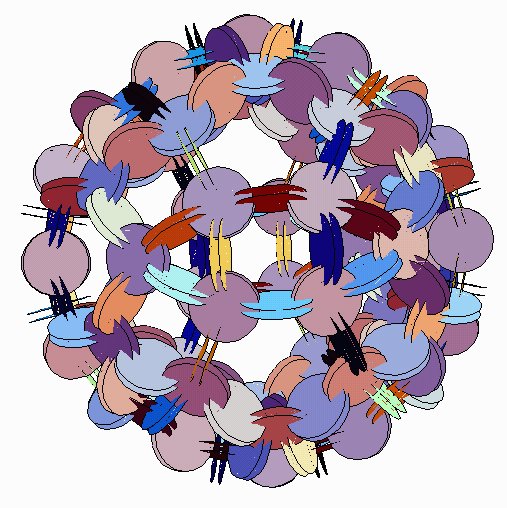Labia
George W. Hart
This is one of a series of pieces I am making which assemble common household items into novel geometric arrangements. The viewer is invited to reconsider the CD in this new context and to be reminded of the sculpture when next encountering an isolated CD.
The CDs were each cut to make slits of the appropriate angles and depths. Then they were slid into each other and glued. There are almost 2000 slits altogether. Although there are 3-sided, 4-sided, and 5-sided openings, all of the CDs that lie flat on the surface are cut with the identical pattern of eight slits. Below is my initial computer-generated model, which shows its geometry.

The form is based on a polyhedron mathematicians call the “rhombicosidodecahedron,” consisting of twenty triangles, thirty squares, and twelve pentagons. The polyhedron is classical, first described in a book by Archimedes before 200 BC. However, that was lost and in the renaissance, the artists Daniele Barbaro in Italy and Wentzel Jamnitzer in Germany independently rediscovered the form. The astronomer Johannes Kepler then studied it mathematically. The fact that there are 360 degrees in a circle and 360 CDs in the sculpture is just a coincidence.
copyright 1999, George W. Hart
